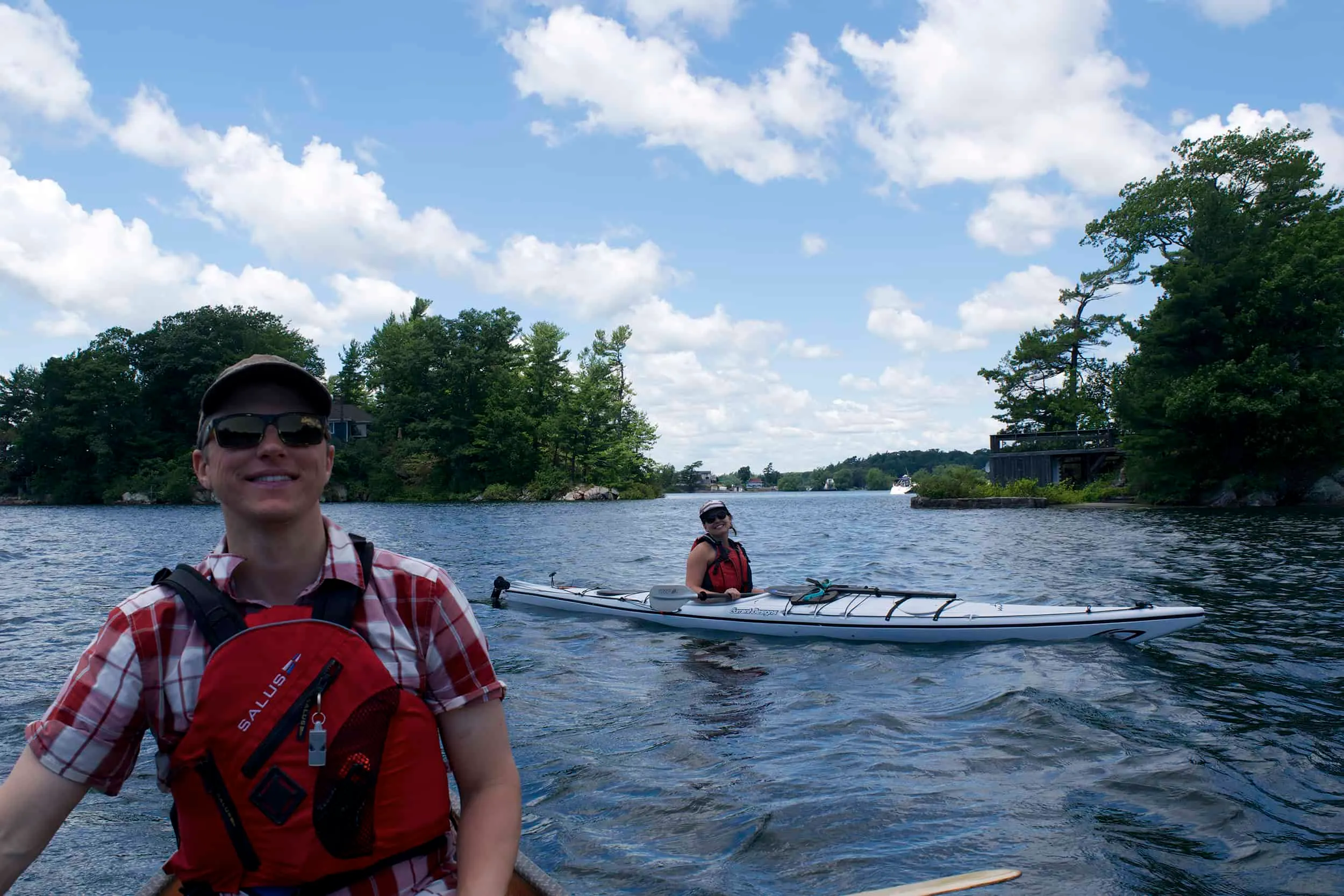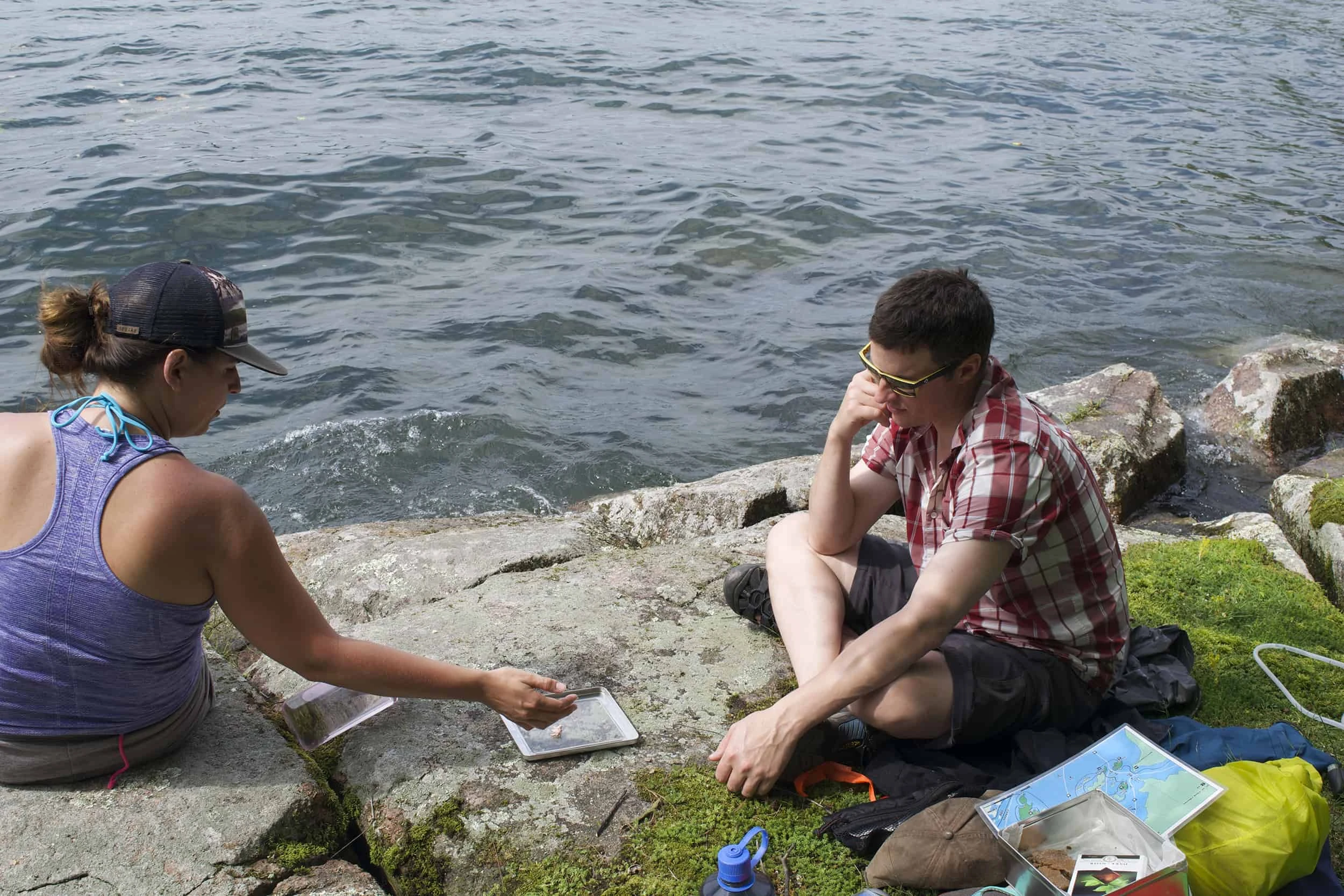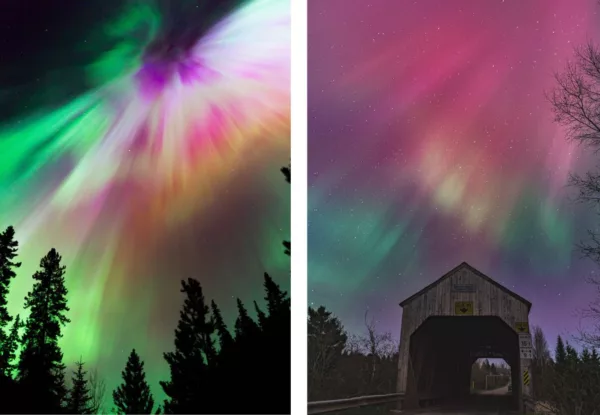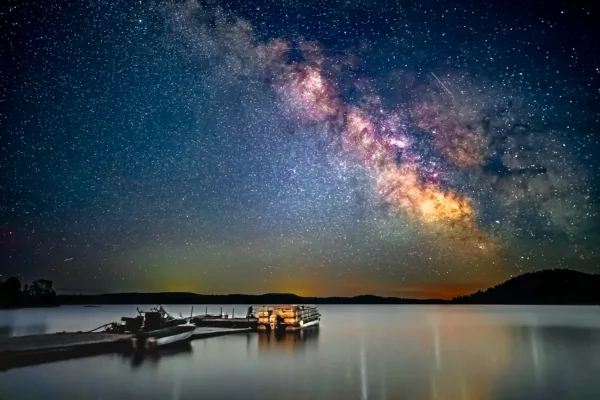Paddling a Fine Line in Thousand Islands National Park
“It doesn’t seem real.” Roger spoke softly from the stern of the canoe.
“Yeah, it’s pretty eerie.” Jenn took in the scene from her vantage point at the bow. I floated nearby in my kayak, not having much to add.
It was the summer of 2017. I was visiting Ontario in the wake of one of its worst flood seasons on record. From the seat of a kayak, paddling with my two trip partners among the islands that dot a little corner of Thousand Islands National Park, the effects of the flooding were startling. Narrow waterways led directly into the front doors of empty cottages. Water dotted with flotsam lapped gently at windowpanes. Boathouses sat abandoned, thick with water and partially submerged, unsettling as we paddled by in respectful silence.
It was a cold Vancouver spring when Jenn and I considered our options for a summer paddling trip near her new home in Ottawa. On paper, the park had a lot to recommend it: clear, fresh waters, a relatively small visitor count and a seemingly endless selection of islands to explore: green splatter paint dotting a rippling blue canvas.
We were discovering that, in trip planning as in online dating, what’s offered is rarely the full story: places, like people, are always both more and less than what you expect.
Day 1

We began our trip in the quaint Ontario town of Gananoque, one of the gateways to the park. More specifically, we were in the bookstore. Jenn, who makes fast friends with everyone she meets, received a brief history lesson from the store’s owner (who claimed Thousand Islands dressing originated in a castle on one of the region’s islands), while Jenn’s friend Roger, the third member of our party, picked up several autobiographies of ’80s pop icons. You could say we had a lazy start.
As a Westerner, I was still getting my bearings—a feat I found challenging without an ocean and mountains to help navigate. I struggled to follow what the employee at 1,000 Islands Kayaking told us about our route.
The map was zoomed in on the corner of the park closest to our put-in. With a system of colour codes and dotted lines, it showed private islands, motorized boating right-of-ways and numbered buoys, many of which, apparently, didn’t actually have a number on them. “You’re going to head this way,” she indicated on the map, “count three islands and then cross. The motorized boats have the right of way, so don’t hang out in the middle.”
Okay, count to three and avoid speed boats. It sounded straightforward.
It wasn’t.
There were more than three islands. Everything was an island, and when you got closer, sometimes, it was two islands. Luckily, Jenn and Roger held the maps, and I followed the path of their canoe in my rented kayak with religious compliance, not really having any idea where we were going.

As Canada’s first National Park east of the Rockies, Thousand Islands flies surprisingly under the radar. It is small, encompassing only 24.4 square kilometers of the aptly named Thousand Islands region that spans from Kingston to Brockton along the Saint Lawrence.
The park has several access points, including Mallorytown, home to an interactive visitors’ centre, and Gananoque, where we put in with the help of the local outfitter.
The only way to explore the majority of the park is by boat, but with motorized access allowed, there are plenty of options to choose from.
The Frontenac Arch Biosphere Reserve section of the park is home to a great number of endangered species including turtles, butterflies, snakes and birds. For all of the park’s biodiversity, I was mostly interested in turtles. We were promised a veritable host of turtles by the kayak shop employee, but in three days, we saw exactly one.

It was sunning itself on the dock at our first island campsite, languidly observing our muddy progress as we pulled our boats ashore, hulls sliding along the murky river bottom and up onto the waterlogged grass of the bank.
Mosquitoes chased us from the water up the labyrinthine path to our designated campsite. I tried to remember the standard progression of insects from distant summers spent in Muskoka as a child—black flies to mosquitoes, and when did the deer flies come out? I thought mid-July was a bit late for this many mosquitoes, but I couldn’t be sure. The warm filter of nostalgia smooths over all manner of bug bites. Or maybe living in Vancouver had made me soft. I bathed in insect repellent while Roger and Jenn calmly unpacked their dry bags.
We pitched our tents on a site with waterfront access. It was the perfect place to eat one of Roger’s gourmet camp dinners and listen to the loons cry across the darkening water.
Day 2

We woke to the hum of yachts and chatter from the other campsite. We hurried through breakfast, eager to get out on the water and explore. Wandering around the campsite in a bathing suit, I debated whether or not to bother with pants, eventually reaching a compromise: I would bring them in the kayak, just in case.
With that sorted, we were off.
“Where did you hear that this was the least-visited national park in Canada?” I asked Jenn, who, in the talks leading up to the trip, had heard this from someone who had apparently been mistaken.
We were staring at a houseboat wedding. At least a dozen were lined up in a row, a giant pink balloon with the word “love” on it drifting among them. Someone was on a floating mattress in the river, trying to organize a group photo.
A swarm of jet skis buzzed past, like an aquatic biker gang in bright pink and blue PFDs. The drone of speedboats in the distance rose and fell, their wakes gently rocking us up and down, back and forth.
Maybe it was just me, but Thousand Islands National Park didn’t feel very empty.

With an estimated 88,520 visitors in the 2017-2018 season, two thirds of which were boaters, the park has among the fewest visitors of any National Park. (Compare that number with Banff’s 4.18 million visitors in the same year.)
Perhaps because of the prevalence of motorized boating, or because of the vulnerability of the species that call the park home, even the relatively small number of visitors threaten the biodiversity of the area.
It wasn’t even as busy as usual, we learned later that day from Tim, a Parks Canada ranger we met as we were clambering out of our boats onto a pile of half-submerged picnic tables. The dock at this particular island was crowded with speedboats and yachts, making docking our canoe and kayak difficult. We were hoping to find a quiet spot to enjoy the lunch we had packed.
Jenn’s friendly questions melted Tim’s sternness as he lectured us about our choice of pull-out, and soon he was telling us everything he knew about the park. Partiers were a problem, he explained, but with cottagers’ islands sharing waterways with park islands, regulation was a matter of delicate negotiation. He told us about the Visitors’ Centre in Mallorytown, which housed aquariums showcasing the park’s aquatic life. Tim was proud to contribute to the aquarium by fishing.
According to Tim, the spring’s unprecedented flooding had kept many of the islands’ summer residents away, unwilling or unable to face the water lapping at their front doors.
Nevertheless, the waterways were busy with yachts and motorboats, and the tranquility of our evening swim was punctuated by laughter from the group next door and the hum of twilight water-skiers passing by at regular intervals.
Day 3

We were determined to make the most of our final day in the park. There was an island we’d been eying that looked like the perfect spot for a picnic and some low-key cliff jumping, but the crowds had scared us off.
I didn’t even bother with the pretense of pants—they stayed packed. As we made our way to the island, discussion turned to the way Thousand Islands is managed.
While the aim of Parks Canada is “to protect, as a first priority, the natural and cultural heritage of our special places and ensure that they remain healthy and whole,” it has other priorities as well. Namely, “to foster public understanding, appreciation and enjoyment in ways that ensure the ecological and commemorative integrity of these places for present and future generations.”
Striking a balance must be a complex task in any National Park, but here, with sound traveling over water and only so many islands to hide behind, the compromises were much easier for us to see.
We circled the final island of our trip, eventually locating a spot where we could safely secure the boats, and followed a narrow path through parched grass and underbrush to a rocky bluff on the quiet side of the island.
As Jenn and I crouched over our lunches in the crook of the small cliff, Roger jumped into the chilly St. Lawrence.
 Thousand Islands National park is hard to make sense of. The true nature of the park seems changeable: an endangered butterfly delicately airing its wings on the bow of a mega yacht. It’s beautiful, but not always pretty. Its stewards seem committed, in the face of pressure from all sides, to finding the right balance.
Thousand Islands National park is hard to make sense of. The true nature of the park seems changeable: an endangered butterfly delicately airing its wings on the bow of a mega yacht. It’s beautiful, but not always pretty. Its stewards seem committed, in the face of pressure from all sides, to finding the right balance.
On our way home, we decided to take a detour through Mallorytown and check on ranger Tim’s fish at the Visitor’s Centre. Plexiglass boxes held different species that live in the park; games and informative plaques taught the park’s natural history and the importance of conservation; smiling employees circulated offering explanations and chances to touch snake skin and rocks and to ask questions. Children played and laughed and, just maybe, began to understand why certain things are worth protecting.
Have you explored Thousand Islands National Park?
Tell us about your experience.
Comment below!
Related content on explore-mag.com:
Go Here: Exploring North of the St. Lawrence in Quebec
15 Dog-Friendly Trails Near Montreal, Quebec














